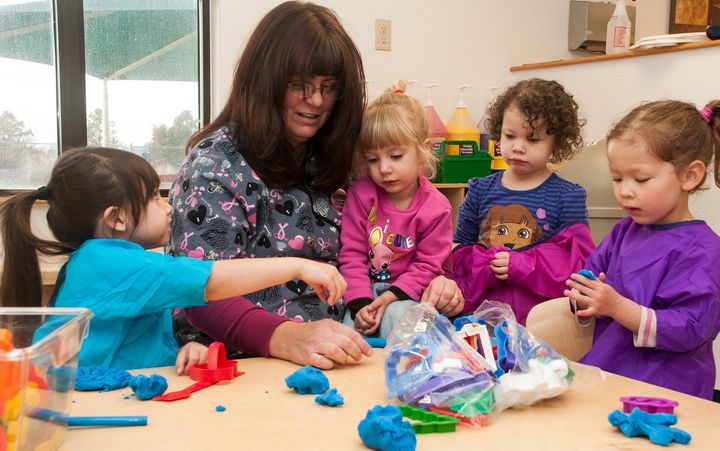“Learning never exhausts the mind.” —Leonardo da Vinci

Those of us who teach young children pay attention not only to what we want children to learn, but also about how children are learning. That’s because we know that helping children become successful learners is a critically important part of our job—in some ways, perhaps the most important.
Children’s attitudes towards learning can often be described in some of these ways:
- Initiative/Curiosity: Are they eager to learn?
- Problem-Solving: Can they work out a solution to a problem?
- Persistence/Attention: Can they work a task and complete it?
- Cooperation: Can they get along with others and work with others?
We call these “Approaches to Learning,” and as a teacher I was always working to create opportunities for my students to develop in all four areas. Parents can do this, too! Here are some examples:
Initiative/Curiosity
Use a child’s natural curiosity. Encourage their “Why?” questions.
- Have your child try new activities, such as using play dough or rolling cars down cardboard ramps. Ask questions that help them wonder: Why is that soft? Why do you think that goes faster when the ramp is higher?
- Try switching out their toys every few months. One way is to take some older toys, put them in a pillow case, and store them for a while. Reintroduce them later and they will be like “new.” Help your child create new ways to play with them.
- Take your child on a nature walk and talk about the environment to create interest in the world around them.
- Try going to a new place every other month or so (or more if you can). Go to a new museum, art center, music event, or library event.
Problem-Solving
- Begin with simple puzzles and have your child work it with you, guiding them to see the parts and the whole.
- Work a problem step by step. For example, your child might have a problem understanding how to complete a task like folding towels. Help break it down into steps by saying: “First, you fold the top of the square down, then fold this side over.”
- To help develop positive problem-solving attitudes, try imagination questions like, “If you had to walk with me to the car, but it started raining, what should we do?”
Persistence/Attention
- Provide a task that requires some persistence to complete, such as putting away toys in a basket. Increase the difficulty and time needed as your child grows older. Examples of these could be taking care of a garden or a pet over a period of time.
- Play games that ask your child to do one, then two, then three things in a row. For example, say, “Stand up, put your hands on your head, and turn around.”
- Provide activities at home that your child should complete with increasing time and attention, like putting napkins on the table and then adding forks or spoons with the napkins. Or, as she gets older, encourage her to finish homework or a home task unassisted.
- Plan a simple craft project with your child, and over time choose crafts that require a longer attention span because they require multiple steps, such as stringing macaroni on a string to make a necklace.
Cooperation
- Playing with others is very important. Take your child to a public playground, interactive museum, or beginning sports activity to help them develop cooperation skills.
- Cooperation with others includes getting along with adults as well as friends. Help your child cooperate with grandparents and other family members of varying ages.
- Read books about cooperation, sharing, getting along, and working together.
The way children feel about themselves impacts their approaches to learning. That’s why teachers pay attention to what we call social-emotional development. Here are some examples:
- Self-Concept: Can the child articulate his or her preferences, thoughts, and feelings, as well as demonstrate independence?
- Emotions and Behavior: Can the child understand and express his or her own feelings, as well as adapt to new situations?
- Self-Regulation: Can the child understand her or his own emotions, behavior, and impulses, as well as follow rules to express them appropriately?
- Social Relationships: Can the child get along with others, understand their feelings, as well as empathize with them?
Every child has her own path of social-emotional development. As a parent, your job is not to try to “push” your child to develop faster, but to provide opportunities for development and help your child work through them.
As young children grow and develop, their approaches to learning will become important skills and powerful strategies for them to become engaged and successful learners who are willing to work with others. And their social-emotional development will give them a foundation of self-confidence in their interactions with others that allows them to take chances and try new things, which are so important to real learning.
The good news is that you can support all of these types of development just by doing what comes naturally as a parent: giving your child love, encouragement, and opportunities.